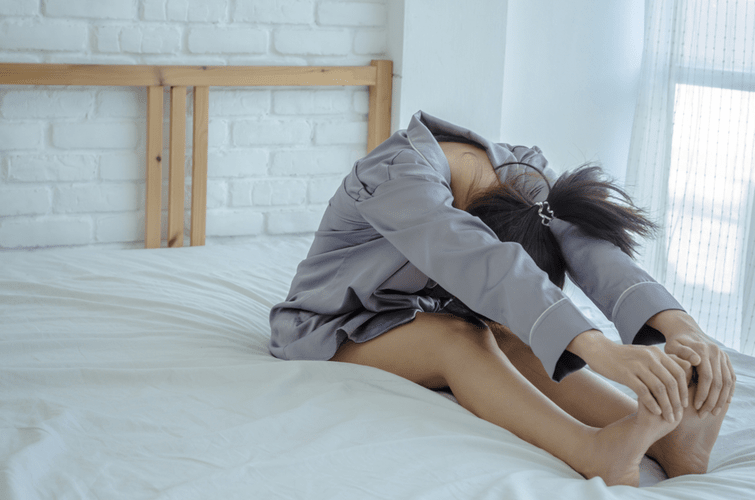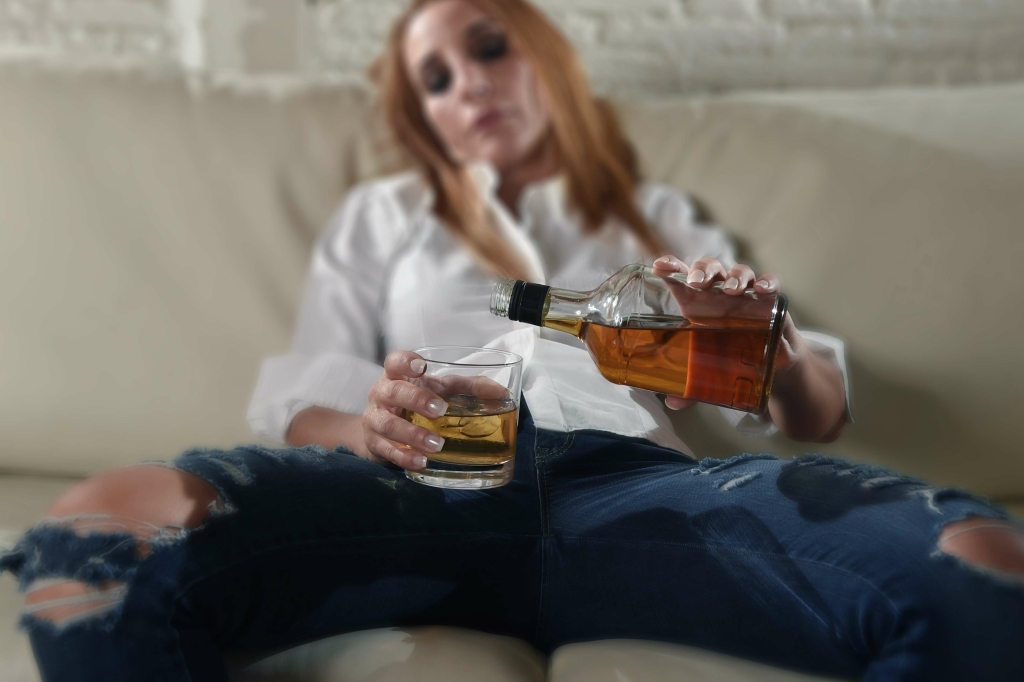For example, a direct examination of the efficacy of paroxetine in this population showed that it reduced social anxiety relative to placebo (Book et al. 2008), providing an empirical foundation for its use in these patients. Moreover, serotonergic agents have favorable properties, such as being well-tolerated and having virtually no abuse potential. Another welcome characteristic of SSRIs in patients with comorbid AUDs is that, in contrast to TCAs, they do not interact with alcohol to increase the risk of respiratory depression (Bakker et al. 2002).
The Association between Alcohol Dependence and Depression before and after Treatment for Alcohol Dependence

Eighteen per cent of the population reported binge-drinking at least once per week; 7% of the population were dependent on alcohol (Table 2); 11% of the population reported abstinence from alcohol over the preceding 12 months (Table 2). Overall, alcohol use was more prevalent among men (Table 2); 41% of men reported monthly binges compared with 21% of women. Men were almost six times more likely to be dependent on alcohol (weighted prevalence 11.6%) than women (2.0%; Table 2). Longitudinal studies have been inconclusive in identifying alcohol as a risk factor for anxiety and depression.
Health Conditions

If you know someone who has a problem with alcohol, please do what you can to support them in getting sober. Dove Recovery in Columbus, OH, is a great resource with a variety of treatment options. Alcohol impairs judgment and decision-making due to its inebriating effects. Anytime you are under the influence of alcohol and you need to manage a stressful situation, you are likely to feel more anxious and/or depressed.
Severity of alcohol abuse and dependence
- Depression can also be directly caused by alcohol in the case of a substance-induced disorder.
- From the psychological perspective, behavioral research demonstrates that drinking to cope with negative affect is a potent marker for current and future problems with alcohol.
- Even if they don’t improve immediately, you’ll probably have an easier time doing something about them when you don’t have to deal with physical symptoms, too.
- Talk to your doctor and work out a plan to safely lower your alcohol consumption.
One way to differentiate PTSD from autonomic hyperactivity caused by alcohol withdrawal is to ask whether the patient has distinct physiological reactions to things that resemble the traumatic event. When patients report mood symptoms, it helps to clarify the possible relationship with alcohol use by asking, for example, about mood symptoms prior to starting alcohol use and on extended periods of abstinence. As shown in the schematic, AUD and other mental health disorders occur across a spectrum from lower to higher levels of severity. For patients in the middle, with up to a moderate level of severity of AUD or the psychiatric disorder or both, a decision to refer should be based on the level of comfort and clinical judgment of the provider. Logistic regression was used to examine the association between alcohol use and onset of anxiety and depression (CIS–R score 512) at 18 months.
What causes depression and alcohol use disorder?
Later in the sleep stages, alcohol disrupts REM sleep and paralytic sleep, which is when your body rejuvenates itself. It is important to remember, however, that certain studies show some overlap among depressive, anxiety, and alcoholic disorders in the same family. Many of these studies are mentioned in the Schuckit and Hesselbrock review, including the work by Merikangas and colleagues (1985). Other such studies are highlighted in the review by Brady and Lydiard (1993). You might notice certain times of the day or being around certain people will make you feel more anxious or more depressed and want to drink more.
When you drink, alcohol initially acts as a sedative, helping you fall asleep faster. However, as your body metabolizes it, alcohol becomes a stimulant, causing frequent awakenings and reducing the amount of restorative REM sleep you Drug rehabilitation get. When you seek solace in alcohol, you’re not truly alleviating your emotional distress. You’re only masking it, creating a cycle where the need for this temporary escape becomes more frequent.
- People going through withdrawal often face anxiety disorders and depressive disorders, making recovery even harder.
- A total of 188 participants underwent community-based detoxification but only 156 were followed up for the six months.
- It is apparent that the collective findings in this area do not unequivocally point to one pathway or exclude another.
When will you feel better?
We start with a visual model of care that indicates when to consider a referral. Our findings are in direct contrast to an early meta-analysis (Reference Hartka, Johnstone and LeinoHartka et al, 1991) that reported a significant correlation between baseline consumption of alcohol and depression at follow-up based on data from eight longitudinal studies. However, in this analysis control of confounders was limited to age, gender and interval between measurements. Data were used from the 18-month followup of the Psychiatric Morbidity Among Adults Living in Private Households, 2000 survey (Reference Singleton and LewisSingleton & Lewis, 2003). The original study was a cross-sectional survey of a nationally representative sample of 8580 adults (aged 16–74 years) living in private households in Great Britain (Reference Singleton, Bumpstead and O’BrienSingleton et al, 2001). Participants in the original survey were classified according to their score on the Clinical Interview Schedule – Revised (CIS–R; Reference Lewis, Pelosi and ArayaLewis et al, 1992).
Alcohol disrupts your sleep
The co-occurrence of AUD and another mental health disorder can complicate the diagnoses and negatively impact the clinical course of both conditions. Many clinical features of AUD have significant overlap with other psychiatric disorders, including sleep disturbances and negative emotional states such as worry, dysphoria, sadness, or irritability that often occur during cycles of alcohol intoxication, withdrawal, and craving. (See Core article on neuroscience.) As described in the sections to follow, a timeline of your patient’s symptoms is a key tool for a differential diagnosis. The relationship between alcohol-use disorders and psychiatric symptoms is both clinically important and very complex (Brady and Lydiard 1993). As a typical depressant, alcohol affects the brain in many ways, and it is likely that high doses will cause feelings of sadness (i.e., depression) during intoxication that does drinking make your depression worse evolve into feelings of nervousness (i.e., anxiety) during the subsequent hangover and withdrawal. The greater the amounts of alcohol consumed and the more regular the intake, the more likely a person will be to develop temporary anxiety and depressive symptoms.